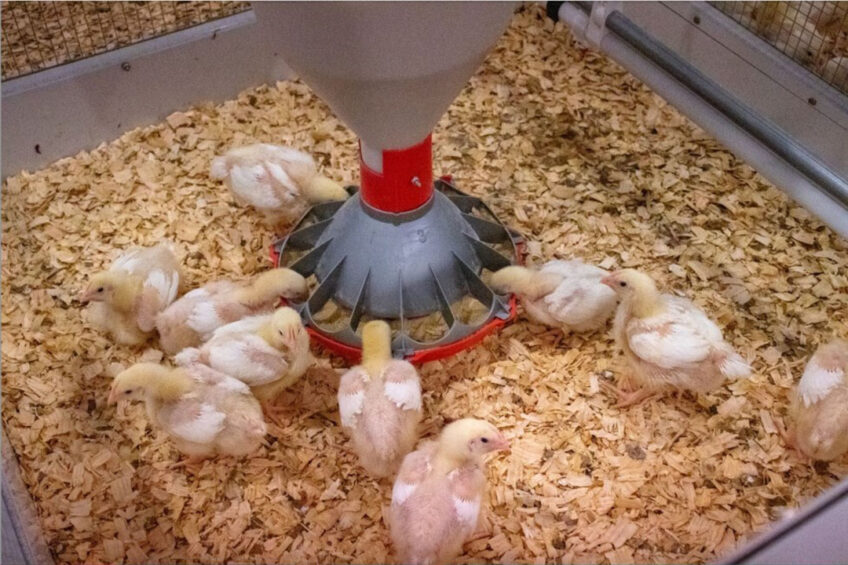Potential of lasers in broiler houses researched

Issues around poor mobility in birds in the later stages of life have dogged the broiler sector in recent years. Now, researchers claim that the use of lasers can alleviate leg problems and improve meat quality.
Research from Iowa State University shows that periodically projecting randomly moving, dot-sized laser lights on the floor of broiler pens stimulates birds’ predatory instincts, encouraging them to become more active.
Elizabeth Bobeck, associate professor of animal science, and Anna Johnson, professor of animal behaviour and welfare, partnered with Signify, a livestock lighting company, to create a second-generation novel laser device for this research.
Influence on bird behaviour
Supported by the US Poultry and Egg Association, the US Department of Agriculture and its National Institute of Food and Agriculture, they conducted a study to assess how these devices influence animal behaviour.
Bobeck said there had been fears that the lasers would encourage the birds to exercise much more, be smaller and lose weight, but instead, they spent more time at feeders and waters, gaining more weight and improving feed efficiency.
Despite their increased activity, birds in the treatment group did not experience more lesions, scratches or blisters on their feet or bodies.
Subsequent studies to measure different aspects of broiler performance, meat quality and stress found in an experiment that the level of serum corticosterone – a stress hormone found in broilers’ blood – was lower when birds were exposed to laser devices.
From a welfare standpoint
“We wanted to know if the laser was used, does it make the birds more anxious or frightened? The answer was ‘no’,” said Johnson. “One thing we were mindful of when creating the lasers is allowing the individual bird choice. If the broilers want to interact with the laser, they can; if they choose not to, they can do that too. I think that is a real benefit from a welfare standpoint.”
The size and movement of the novel laser devices mimic small insects that chickens naturally want to chase, said Bobeck: “Other laser colours, like green, have a more intense wavelength and can be more damaging to the eyes,” she added.
Minimal labour
Unlike other forms of environmental enrichment for poultry, like perches and platforms, the laser devices do not need to be cleaned and sanitised between bird shipments, limiting labour requirements.
“A device might need occasional tweaking or software upgrades, but for all intents and purposes, it will run on its own. That will be attractive to producers.”
Over 30 undergraduate students and several graduates have been involved in the research, which has now moved to further commercial confinement trials to understand their usefulness at large broiler operations.
Join 31,000+ subscribers
Subscribe to our newsletter to stay updated about all the need-to-know content in the poultry sector, three times a week. Beheer
Beheer











 WP Admin
WP Admin  Bewerk bericht
Bewerk bericht